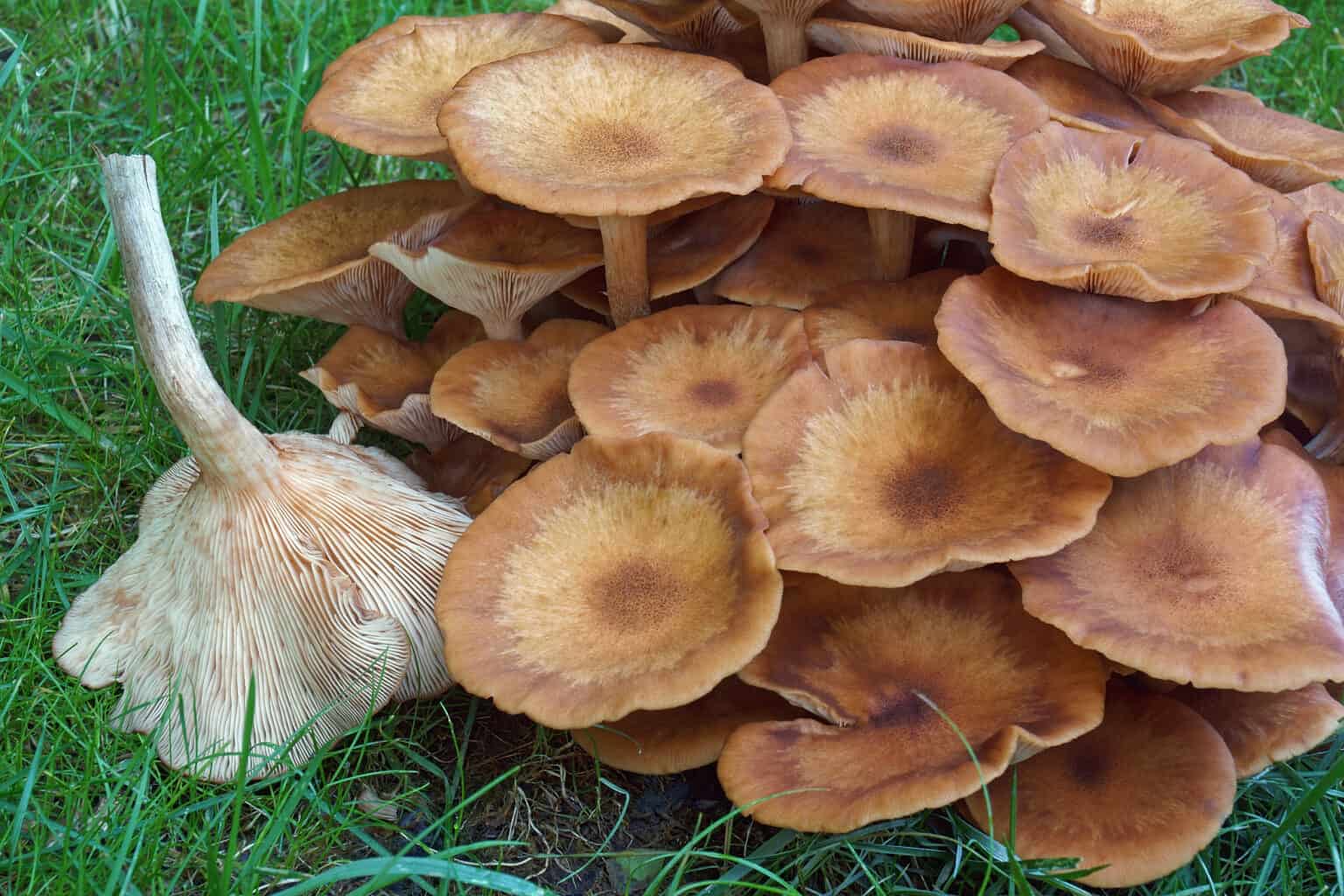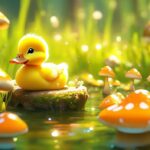This guide will help you confidently identify those curious fungi popping up in your yard. With clear descriptions, helpful photos, and expert tips, you’ll become a backyard mushroom pro in no time!
Decoding the Mushroom Message: What’s Growing on Your Lawn?
Finding mushrooms on your lawn can be exciting. Are they a magical surprise or a cause for concern? This guide will explore the world of lawn mushrooms, empowering you to appreciate their beauty while prioritizing safety.
Why Are There Mushrooms in My Yard?
Mushrooms are like nature’s miniature recycling centers. They’re the visible part of fungi working tirelessly to break down organic materials in your lawn, such as fallen leaves and grass clippings. Their presence usually indicates a thriving ecosystem, which is a positive sign! However, it’s crucial to remember that not all mushrooms are equal. While some are safe to eat, others can be dangerous to both humans and animals.
Becoming a Mushroom Detective: Identifying Key Features
Identifying mushrooms is like piecing together a captivating puzzle. Here are the clues to look for:
- Cap: Picture this as the mushroom’s hat. Is it flat, rounded, or cone-shaped? What’s its size and color?
- Gills/Pores: Take a peek beneath the cap. Do you see thin, blade-like gills, or tiny, sponge-like pores?
- Stalk: Does the mushroom have a stem? If so, note its shape and color.
- Spore Print: This technique involves placing the cap on a piece of paper to collect spores, revealing their color.
- Smell: Some mushrooms have distinctive odors that can aid in identification.
Familiar Faces: Common Lawn Mushrooms in the USA
Let’s meet some of the characters you might encounter in your yard:
Mushrooms You Might Be Able to Eat (With Extreme Caution!):
- Horse Mushroom: This variety makes a grand entrance! It’s large, boasts a brown cap, and often appears in spring and fall.
- Field Mushroom: This is your classic white-capped mushroom, a familiar sight and generally safe to eat (but always confirm with an expert!).
- Blusher: This mushroom earns its name from its flesh, which turns pink when cut or bruised. You’ll often find it near trees.
Mushrooms to Steer Clear Of (Seriously, Don’t Touch!):
- Yellow Stainer: True to its name, this mushroom has a yellowish cap that stains yellow upon contact.
- Death Cap: This mushroom is incredibly dangerous, even deadly. With its white cap, it’s easily mistaken for edible varieties.
- Green Gill: This mushroom means business with its poisonous green gills.
Mushroom Safety 101: Proceed with Caution
Remember the golden rule: Never consume a mushroom based solely on a picture. It’s like online dating – appearances can be deceiving! Always consult with experts, reference field guides, or seek help from seasoned mushroom hunters. And remember to keep children and pets away from unfamiliar mushrooms. It’s always best to err on the side of caution.
Unveiling the Usual Suspects: The Most Common Backyard Mushrooms in Your Area
Have you ever wondered about the most common backyard mushrooms? The answer can vary depending on your location, but some familiar faces tend to pop up frequently across the United States.
Let’s take a closer look at some of these common fungal visitors:
-
Meadow Mushroom (Agaricus campestris): This classic white-capped mushroom with pink to brown gills thrives in sunny, open areas. However, be cautious, as it bears a striking resemblance to some poisonous varieties.
-
Fairy Ring Mushroom (Marasmius oreades): Ever spotted a perfect circle of mushrooms on your lawn, as if placed by fairies? That’s the work of the Fairy Ring Mushroom. While they lend a touch of magic, they can harm your lawn by causing uneven growth.
-
Yellow Stainer (Agaricus xanthodermus): Don’t let this mushroom’s innocent appearance fool you. As its name suggests, it turns a rather unpleasant shade of yellow when bruised and emits an equally unpleasant odor. A word to the wise: accidental ingestion can lead to an upset stomach.
-
Haymaker Mushroom (Panaeolus foenisecii): Picture a tiny mushroom with a delicate bell-shaped cap. That’s our Haymaker, often appearing after a good lawn mowing. Despite its size, this mushroom contains toxins that are best avoided.
-
Ringless Honey Mushroom (Armillaria tabescens): If you spot a cluster of mushrooms huddled at the base of your favorite tree, keep your distance! It could be the Ringless Honey Mushroom, which, despite its sweet-sounding name, can harm trees by stealing nutrients.
-
Shaggy Ink Cap (Coprinus comatus): This mushroom is a fascinating spectacle. With its bell-shaped cap adorned with shaggy scales, the Shaggy Ink Cap possesses fleeting beauty. Why? Because it practically melts before your eyes, decomposing into an inky liquid.
-
Horse Mushroom (Agaricus arvensis): As its name implies, the Horse Mushroom prefers fields and pastures but may grace your backyard with its presence. While some consider it edible, mistaking it for a toxic counterpart is all too easy.
-
The Blusher (Amanita rubescens): This aptly named mushroom lives up to its name by turning a telltale shade of red when cut or bruised. While technically edible after proper cooking, poisonous imposters lurk, making identification challenging for the untrained eye.
Remember, observing these fascinating organisms up close is a treat, but caution is key. Admire their beauty, but avoid turning them into a meal unless you’re absolutely certain of their identity. Happy mushroom hunting!
Can You Identify a Mushroom From a Picture? Accuracy & Safety Tips
Can you snap a picture of a mushroom and have it identified? Absolutely! Several impressive apps powered by artificial intelligence (AI) can analyze your mushroom snapshots and offer clues about their identity. These apps utilize advanced image analysis algorithms to compare your photos to vast databases of mushroom images.
But how accurate are these apps, and can you trust them to determine edibility?
The Accuracy Factor:
The clarity and focus of your photo significantly impact the app’s accuracy. Ensure good lighting and capture the entire mushroom, including the cap, gills, and stem.
The app’s accuracy also depends on the size and diversity of its mushroom database. Some excel at recognizing common species but may struggle with rarer ones.
The Edibility Dilemma:
Here’s the crucial point: Never, ever rely on an app alone to determine if a mushroom is safe to eat. Even if the app seems confident, the risk is simply not worth it. Mushrooms can be deceptive, and some poisonous varieties closely resemble edible ones.
Always consult a qualified mushroom expert (a mycologist) before consuming any wild mushroom. These experts possess years of experience and can help ensure your foraging adventures are safe and enjoyable.
In Conclusion:
- Mushroom identification apps are fantastic tools for satisfying your curiosity and exploring the world of fungi.
- They can provide a general idea about the mushrooms you encounter.
- Keep in mind that different apps might yield different results, so compare findings across multiple apps.
- When it comes to edibility, a human expert’s opinion is the only one that matters. Play it safe, enjoy the process, and happy mushroom hunting!
How to Tell if a Field Mushroom is Poisonous: A Field Guide to Avoiding Look-Alikes
You’re strolling through a field after a refreshing rain shower when you spot a cluster of enticing mushrooms. Your foraging instincts kick in, but hold on! Identifying edible mushrooms requires a keen eye, as some dangerous look-alikes can lead to serious health risks.
Essential Safety Tips for Field Mushroom Foraging:
- No Guessing Games: The cardinal rule of mushroom foraging is never to consume a mushroom unless you are 100% positive about its identification. Your health is far too valuable for a risky snack.
- Gills Tell a Tale: Start by examining the gills under the mushroom’s cap. Poisonous field mushrooms often have gills that stubbornly remain white, even as the mushroom matures. Edible varieties typically exhibit gills that change color, often to brown, as they age.
- Ring Around the Stem?: While many poisonous mushrooms, as well as some safe ones, have a ring around their stem, this feature alone isn’t a foolproof indicator of edibility.
- Take a Sniff: Exercise caution if the mushroom smells like almonds. This aroma can signal the presence of amatoxin, a toxin found in certain poisonous mushrooms.
- Don’t Be Fooled by White: Not all white mushrooms are harmless. The mushroom world is diverse, and some toxic varieties sport a deceptively innocent white hue. Look for other identifying features.
- When in Doubt, Throw it Out!: This adage exists for a reason. If you harbor any doubts about a mushroom’s identity, err on the side of caution and discard it. Plenty of other delicious and safe foraging opportunities await.
Ever dream of crafting your own mad libs maker? With our user-friendly tool, you can create endless versions of the classic game, perfect for kids and adults alike! Or, if you’re looking for a delicate piece of jewelry to complement your outfit, be sure to check out our exquisite lavaliere necklace. Its timeless design and intricate detailing will add a touch of elegance to any ensemble.















